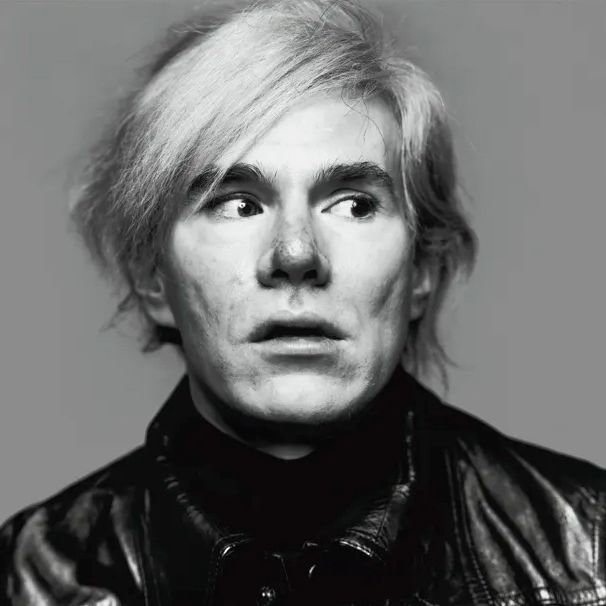Andy Warhol
“If you want to know all about Andy Warhol, just look at the surface of my paintings and films and me, and there I am. There’s nothing behind it.”
Perhaps the most influential artist of the twentieth century, Andy Warhol (1928–1987) was a leading figure of the Pop art movement in the United States. His multifaceted practice incorporated commercial strategies and aesthetics, reflecting the banality of consumer culture and the power of mass media. His work challenged categories of high and low art and emphasized American cultural fixations on celebrity and death.
Born Andrew Warhola to Carpatho-Rusyn immigrants in Pittsburgh, Pennsylvania, Warhol earned a degree in pictorial design from the Carnegie Institute of Technology in 1949 before finding success as a commercial illustrator in New York City. In 1962, he gained recognition for his paintings of quotidian objects with an exhibition of Campbell’s soup can canvases at Ferus Gallery in Los Angeles. He soon began silkscreen-printing iterative images of consumer goods and celebrity portraits (notably Marilyn Monroe and later, Prince). He appropriated existing pictorial imagery from advertisements, comic strips, tabloids, and newspapers, manipulating the images by enlarging, cropping, or repeating them. His Death and Disaster series considered the impact of the media’s unfiltered circulation of traumatic images, including car crashes. At his studio, dubbed “The Factory” in 1963, Warhol worked with assistants in ways that simulated an assembly line, undermining the notion of authenticity. He produced more than five hundred underground films with his collaborators in the mid-1960s, including his Screen Tests (1964–66) and Chelsea Girls (1966), which subverted mainstream movie conventions surrounding length, structure, and explicitness. Warhol attracted figures that became known as “Superstars,” including model Edie Sedgwick, actor Viva, and artist Billy Name. In 1968, he was shot and critically wounded by radical writer Valerie Solanas; and the following year, he co-founded Interview magazine.
In the 1970s, Warhol focused on commissioned silkscreen portraits of high society based on his own Polaroid photographs, as well as paintings of politically and psychologically charged symbols. These included images of skulls, the hammer and sickle, the dollar sign, and Chinese leader Mao Tse-Tung. In the final decade of his life, he explored abstraction with his Oxidations (or “Piss paintings” 1978) and Rorschachs (1984). He collaborated with younger artists Jean-Michel Basquiat, Francesco Clemente, and Keith Haring, and he developed television programs for MTV. Two years after his death, the Museum of Modern Art in New York mounted its first retrospective of his artwork, which is housed today in major collections worldwide, as well as Pittsburgh’s Andy Warhol Museum. In 2019, the Whitney Museum of American Art, New York, organized a traveling retrospective that traveled to the San Francisco Museum of Modern Art and the Art Institute of Chicago.
Exhibitions
Selected Artworks
- Andy Warhol
- Gun, 1981-82
- Silkscreen ink and acrylic on canvas
- 16 × 20 inches (40.6 × 50.8 cm)
- Andy Warhol
- Oxidation Painting, 1978
- Urine, metallic pigment, and acrylic on canvas
- 76 × 52 inches (193 × 132.1 cm)
- Andy Warhol
- Torso (Male Buttocks), 1977
- Synthetic polymer and silkscreen ink on canvas
- 50 × 40⅛ inches (127 × 101.9 cm)
- Andy Warhol
- Jackie, 1964
- Acrylic and silkscreen ink on linen
- 20 × 16 inches (50.8 × 40.6 cm)
